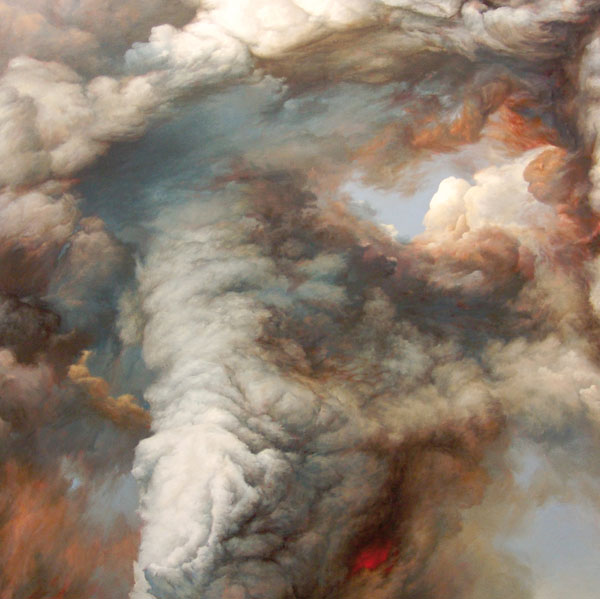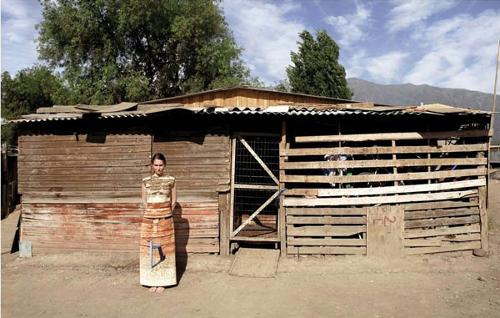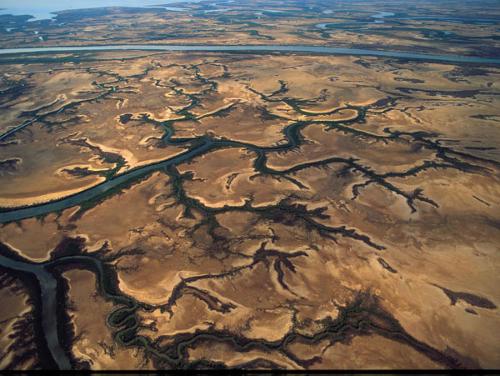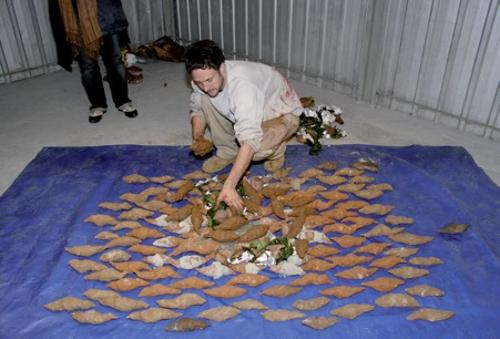
James Guppy seems to specialise in subverting established traditions. In the past he has twisted 19th century salon painting techniques into a critique of the nature of the gaze, as well as reconfiguring Rembrandt and Goya to modern circumstance. Now he turns to nature, and in particular clouds.
This is such a romantic subject, and so British (he is English born) to be concerned with the trails of vapour that define our skies.
Clouds have been very much a part of the British tradition of art since the time of Turner and Constable. They of course celebrated their misty beauty, the almost tactile quality of the light and shade, heralding storm or foggy weather; Guppy is interested in far more than meteorology.
At first these appear to be wild and dramatic paintings of clouds, painted in a smooth style that owes more to the 19th century studio tradition than to modern tendencies of photorealism. In 'Clothed in Clouds', dense cloud spirals upwards to threatening grey, evoking the frills and furbelows of antique dress. 'Cloudfront' could at first be seen as an idyllic pattern of sunlight and shadow, while 'Shroud' is a glorious combination of different cloud effects.
But on closer examination the viewer realizes that Guppy is not really concerned with the smooth flow of paint and the subtle glazes of scenic skies. In 'Shroud' the sky is lit from unseen fires below. The greys come from fires mixed with filth. These are paintings of prophesy, the artist is evoking the visual consequences of meteorological change. 'Shroud' indeed is both a verb and noun, In this world the clouds of pollution cover the earth, choking the land, and then act as a cloak to bury the dead planet.
'Cloudfront' is revealed as being the point where the clouds of the sky meet the choking smoke of the earth. There is the wispiness as mist melts into air, contrasted with the wonderful dark grey swirls reflecting the chaos below. 'Clothed in Clouds' has the clue. This is a part of a giant storm of filth swirling up from the earth below, choking the air. As the earth heats it burns. Some of the images that have inspired him come from the great bushfires of recent years, when skies were simultaneously illuminated and dulled by the red of the fire and the pall of the smoke. There is a sense of this in 'Fireballs', where red smoke attacks grey. The viewer can almost feel the intensity of the fallout. By way of contrast 'Smoke Signals' shows smoke billowing into the sky, its colours informed by fiery red and charcoal. A patch of blue remains as a forlorn hope, or perhaps it is a destination the smoke will one day reach.
Just as the Impressionists who visited England in the 19th century came to value the small studies by Constable, because of their painterly quality, so I found more purely visual interest in Guppy's many small paintings of cloud effects. Here the viewer can enjoy the texture of his brushwork as he swirls around to evoke the impression of smoke and fire; the forewarning of doom and disaster.
Even though Guppy is deliberately quoting the 19th century British masters, who in turn inspired Monet to glory in smoke and steam, the work of another, more recent artist comes to mind. I am referring of course to the later paintings of James Gleeson. The very fluidity of Guppy's paint and the way he apparently uses accident to create his fantastic cloud effects, is remarkably similar to Gleeson's miraculous sea shores. Gleeson though is more likely to evoke personal interior travels than the future hell of global warming.












